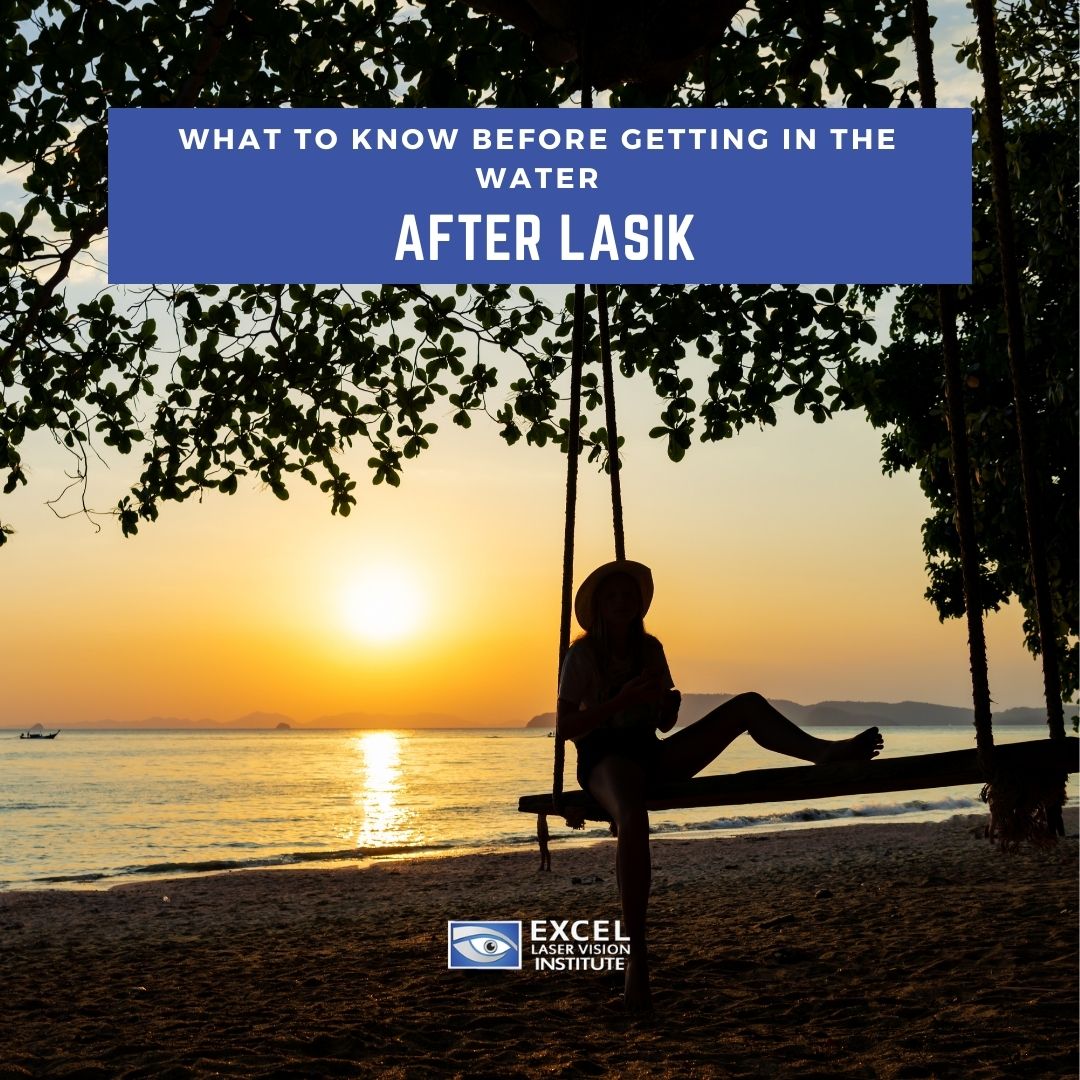
What to Know Before Getting in the Water After LASIK
It’s almost summertime, which means that many people are already making beach-day and pool-day plans. There’s nothing like a dip in the water to cool you down. If you’ve recently had LASIK eye surgery, then you may be wondering how this will affect your summer plans. LASIK experts in Los Angeles particularly Doctor Moosa are here to answer all your post-surgery questions and let you know the best way to protect your eyes while you’re enjoying the sunshine.
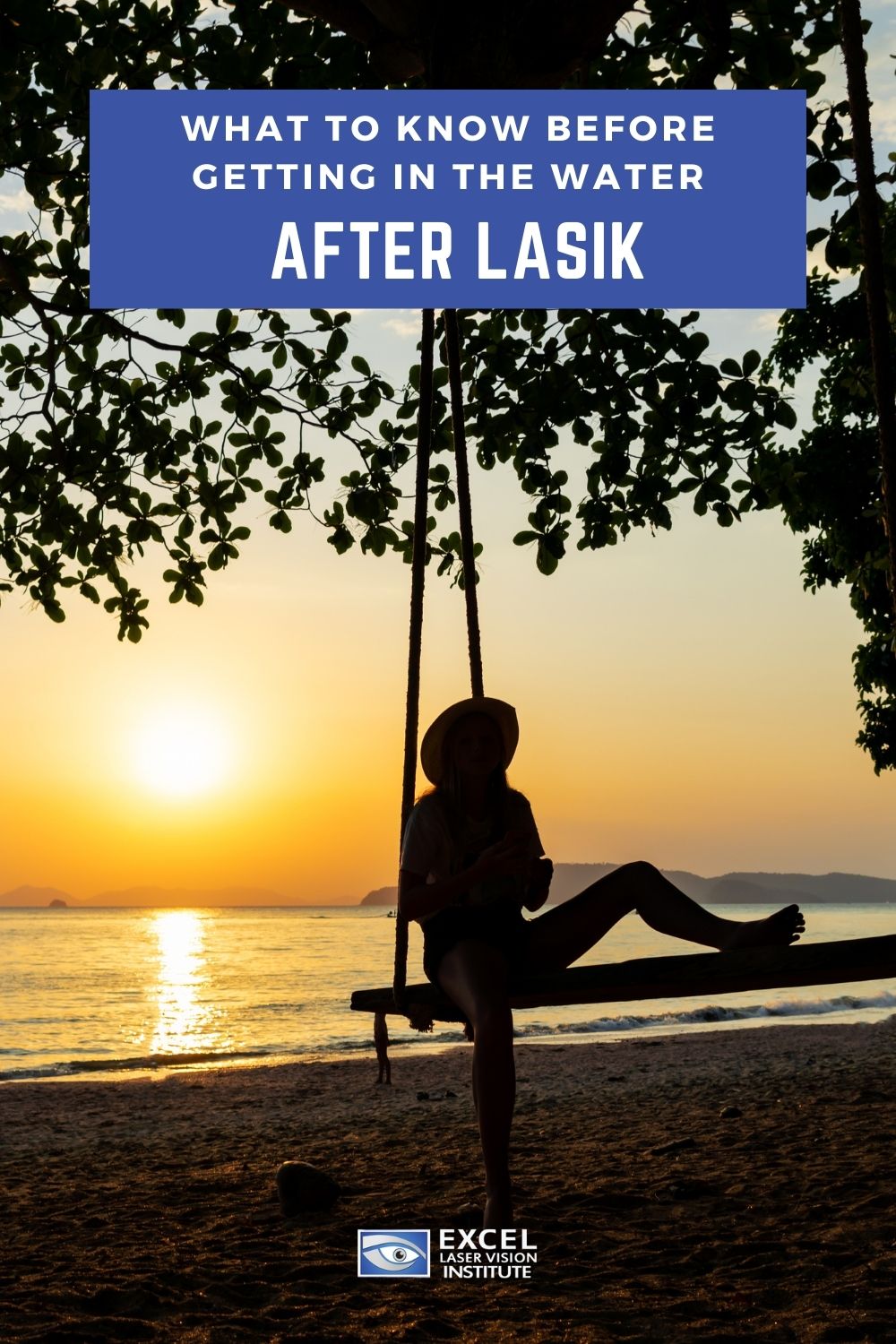
One of the reasons that people get corrective eye surgery is because it allows them to do certain physical activities more freely. Swimming, for example, can be a pain with glasses or contacts. Either you have to swim blindly, with your glasses on the side of the pool, or you run the risk of losing your contacts in the water and developing an eye infection from bacteria and chemicals. Once patients receive laser eye surgery, they are liberated from this summertime struggle.
The best way to approach your life, post-LASIK, is to follow the instructions given by your LASIK surgeon. They know the status of your eyes better than anyone and will evaluate their healing process in order to give informed opinions about how careful you should be. Predictably, you might need to wait a little before you can enjoy certain activities in order to avoid irritating your eyes while they are in the stages of healing. Here are some general guidelines that you may hear from your doctor after getting laser vision correction in Los Angeles:
- After One Week: The corneal incision is likely still recovering. LASIK patients should stay away from pools to avoid developing an infection.
- After 2-3 Weeks: By now, the corneal incision has likely closed up. However, it is still a good idea to avoid any activities that require water submersion (lakes, pools, hot tubs, etc.).
- After One Month: At this point, doctors will typically allow patients to swim again. However, they will suggest wearing goggles and not opening eyes underwater.
Beyond this, LASIK surgeons recommend always wearing sun protection when spending an extended period of time outside. Whether or not it is a sunny day, sun exposure can have a damaging effect on eyes. Sunglasses should have 100% protection from UVA and UVB rays. LASIK experts also recommend wearing a wide-brimmed hat, along with glasses, to prevent any irritation or sunburns.
Summertime is the perfect time to enjoy your crystal clear vision from LASIK. So, make sure to follow the recovery steps and exercise caution in order to preserve the work of the surgery. LASIK professionals recommend drinking plenty of water in order to offset any dry eye symptoms. This will support the eye’s tear ducts and prevent extreme irritation. Eye drops may also be prescribed to help alleviate any discomfort. Use your drops every day as directed by your surgeon.
You may need to wait a little bit before enjoying your cold plunges into the pool, but it will all be worth it! Before you know it, you will be splashing away the summer days. To learn more about LASIK recovery or to determine if you are a LASIK candidate, contact Excel Laser Vision Institute at (888) 363-1583.

LASIK Experts Share Home Remedies for Dry Eyes
Many people experience dry eye syndrome to varying degrees. For some, it’s common during allergy season or when they wear their contacts too much. For others, it’s a constant struggle. Some people report minor symptoms of dry eye after laser eye surgery, which is why LASIK doctors in Orange County like Doctor Moosa are quite knowledgeable on the subject.
Dry eye can be caused by environmental factors, medical conditions, and certain medications like antidepressants, antihistamines, nasal decongestants, oral contraceptives, and acne medication. There are certain demographic and lifestyle factors that can increase your risk for dry eye as well. These include being a woman, aged 65 and over, frequently using contact lenses, prolonged screen use (low blink rate), smoking, vitamin deficiencies, autoimmune diseases, and diabetes.
Dry eye can be uncomfortable and can increase your risk of developing infections. That is why it is important for your LASIK surgeon to determine if your condition is too severe for laser eye surgery before you are approved as a candidate. Regardless, it is a good idea to have some home remedies on hand to mitigate these symptoms. If you notice your eyes becoming drier after getting laser eye surgery in Orange County, then speak to your eye doctor about prescribed eye drops and other medical solutions.

Here are some of the top home remedies for relieving dry eye:
Conduct a Simple Cleaning Procedure
If your eyes are feeling dry, then that means that they are not producing enough tears. Use warm water and a gentle, chemical-free soap to wash your upper and lower eyelids. Follow this with a warm compress to help your eyes properly moisten.
Rest Your Eyes
Too much screen time can contribute to dry eye syndrome. If your eyes are irritated from computer screens or tv screens, then you might need to look away for a while. Consciously increase your blinking rate and maybe even shut your eyes for a few minutes.
Consume More Essential Fatty Acids
According to Doctor Moosa, a leading LASIK expert in Orange County, foods like salmon, flax seeds, and walnuts are high in omega-3. This is great for your vision and your tear glands! Incorporate more fatty acids into your diet in order to improve your dry eye.
Try Vitamin Supplements
Researchers have found a link between dry eye and low vitamin D intake. If you have known vitamin deficiencies, then you should definitely supplement this with some eye-friendly vitamins. Your eye needs vitamin D, C, E, B6, B9, B12, A, riboflavin, niacin, lutein, zeaxanthin, and thiamine.
Consume Less Alcohol
The National Institutes of Health have detected higher cases of dry eye with those who indulge in alcoholic beverages due to the dehydrating effects of alcohol. If you are struggling to keep your dry eye symptoms under control, it can’t help to eliminate this possible cause.
Drink More Water
When your eyes lack lubrication, a good thing to do is drink more water. Hydrating your body will allow your eyes to produce more tears, clean out debris, and blink more often. Experts recommend eight to ten glasses of water a day for proper hydration.
Sleep More
Did you know that lack of sleep can affect your tear ducts? According to the National Institutes of Health, dry eye can be worsened for those that don’t get enough sleep at night. Experts recommend 7 to 8 hours of regular sleep.

Why You Should Consider Getting LASIK This Spring/Summer
We’re in the thick of spring. The birds are chirping, the sun is shining, and more people are getting their vaccines! What better time to look into getting LASIK in Los Angeles? For many people, this coming summer represents a much-needed sigh of relief. Finally, families can rest assured that their loved ones are protected and enjoy public activities again.

Here Are Some Of Our Top Reasons For Considering Laser Eye Surgery This Spring or Summer:
Enjoy Stylish and Convenient Eye Protection
Are you tired of wearing that one pair of prescription sunglasses that you own? Don’t want to worry about putting in contacts when you’re at the beach? With 20/20 vision, you won’t have to rely on corrective lenses to enjoy your time in the sunshine. Prescription glasses can be an expensive purchase (and also vulnerable to activities like biking, volleyball, and swimming). Enjoy your vacation and protect your vision without worrying about losing your one pair of prescription sunglasses.
Swim Freely
Taking a dip in the pool when it’s hot out can be just the thing for a summer day! Unfortunately, for those who wear glasses or contacts, swimming can be a huge challenge. If you take off your prescription lenses to swim, then you won’t be able to see! Those who wear contacts may fear losing their invisible lenses in the pool or contaminating them with chlorine. This can lead to costly replacements or even an eye infection! When you achieve your vision goals through LASIK, you can swim freely with peace of mind.
Avoid Accidents
When the weather is warmer, many people like to get outside and do something active, whether that be exercising or playing sports. Glasses or contacts can be a hindrance to these kinds of spring and summer activities. Perspiration and heat can cause fogging, streaks, and other visual barriers for those who wear glasses. Meanwhile, those who wear contacts run the constant risk of developing an infection from dirt, dust, and other outside particles that attach to the lenses. With a clear vision, you won’t have to worry about losing or damaging your only vision source.
Mitigate Allergies
During spring and summer, there may be a greater concentration of pollen in the air. This can be difficult for those who experience eye irritation with their seasonal allergies. Contact lenses can exacerbate the situation by trapping dirt and pollen or drying out. Even wearing glasses can be a hassle when your eyes are red, itchy, swollen, and dry. Visit Excel Laser Vision Institute, a LASIK eye center in Los Angeles, to learn how laser eye surgery might improve your seasonal allergies over the long term.
Savor Spring and Summer
It finally feels like we’re reaching the light at the end of the tunnel! Celebrate this time with a life-changing procedure. LASIK has helped many people achieve their vision goals and improve their overall quality of life. Schedule your free LASIK consultation at Excel Laser Vision Institute. Our team of skilled eye care professionals will determine whether you are an eligible candidate for laser eye surgery and will jumpstart the process so you can savor the days ahead with clear vision.
10 Spring Activities You Can Enjoy After LASIK
After learning about the benefits of LASIK and why it’s a great choice for vision correction this spring, you may be eager to explore all the activities you can enjoy with your newfound visual freedom. LASIK can transform your daily life, especially during the vibrant spring season when outdoor adventures beckon. In this article, we’ll explore ten exciting spring activities that are even more enjoyable after LASIK, allowing you to fully embrace the beauty of the season with clear, unencumbered vision.
Hiking Adventures
Springtime heralds the awakening of nature, with blossoming flowers and verdant landscapes beckoning outdoor enthusiasts to explore. With clear vision post-LASIK, hiking becomes an even more immersive experience as you traverse winding trails, drink in panoramic vistas, and marvel at the intricate beauty of blooming flora.
Cycling Escapades
Feel the wind in your hair and the sun on your face as you pedal through scenic routes without the hindrance of glasses or the discomfort of contacts. LASIK provides cyclists with enhanced visual clarity, allowing them to confidently navigate the terrain and soak in the sights and sounds of spring’s symphony.
Picnics in the Park
Bask in the warm embrace of spring by organizing picnics in lush, sun-kissed parks. With improved vision post-LASIK, you can admire the vibrant tapestry of nature, indulge in delectable treats, and engage in leisurely activities like frisbee or kite flying with friends and family.
Photography Expeditions
Capture the essence of spring in all its glory through the lens of a camera. LASIK surgery ensures crisp, clear vision, enabling budding photographers to immortalize the beauty of blossoms, chirping birds, and cascading waterfalls with unparalleled precision and clarity.
Outdoor Yoga Sessions
Embrace serenity and mindfulness amidst nature’s embrace with outdoor yoga sessions. LASIK eliminates the need for glasses or contacts during practice, allowing yogis to focus on breathing, balance, and alignment without visual distractions, fostering a deeper connection with the natural world.
Birdwatching Excursions
Spring is synonymous with the melodious chirping of birds as they herald the arrival of warmer days. LASIK recipients can now partake in birdwatching expeditions with unobstructed vision, spotting feathered friends perched on branches or soaring across azure skies with newfound clarity and precision.
Al Fresco Dining
Savor spring flavors by dining al fresco at quaint cafes or charming eateries in picturesque locales. LASIK ensures uninterrupted enjoyment of culinary delights, allowing food enthusiasts to relish every bite and sip without the inconvenience of glasses fogging up or contacts drying out.
Stargazing Nights
As the days grow longer and the nights warmer, embark on stargazing escapades to marvel at the celestial wonders above. LASIK recipients can now gaze upon the cosmos with unparalleled clarity, tracing the constellations and counting shooting stars against velvety darkness.
Artistic Pursuits
Unleash your creativity with air painting or sketching sessions amidst nature’s canvas. LASIK surgery empowers artists to capture the essence of spring’s beauty with precision and detail, immersing themselves in the creative process without the constraints of corrective eyewear.
Festivals and Fairs
Immerse yourself in the festive spirit of spring by attending outdoor festivals, fairs, and cultural celebrations. LASIK ensures optimal visual acuity, allowing revelers to soak in the vibrant ambiance, indulge in culinary delights, and partake in exhilarating activities with unmatched clarity and comfort.
Conclusion
Spring is a season of new beginnings and vibrant transformations, making it the perfect time to consider LASIK and embrace a life of visual freedom. With Excel Laser Vision Institute, you can trust in the expertise of Dr. Moosa and the state-of-the-art technology available for your LASIK procedure. Say goodbye to the hassles of glasses and contacts and hello to a world of clear vision and endless possibilities. Whether you’re enjoying the beauty of blooming flowers or embarking on outdoor adventures, LASIK can enhance your spring experience and beyond. Experience the joy of clear vision this spring with LASIK from Excel Laser Vision Institute.
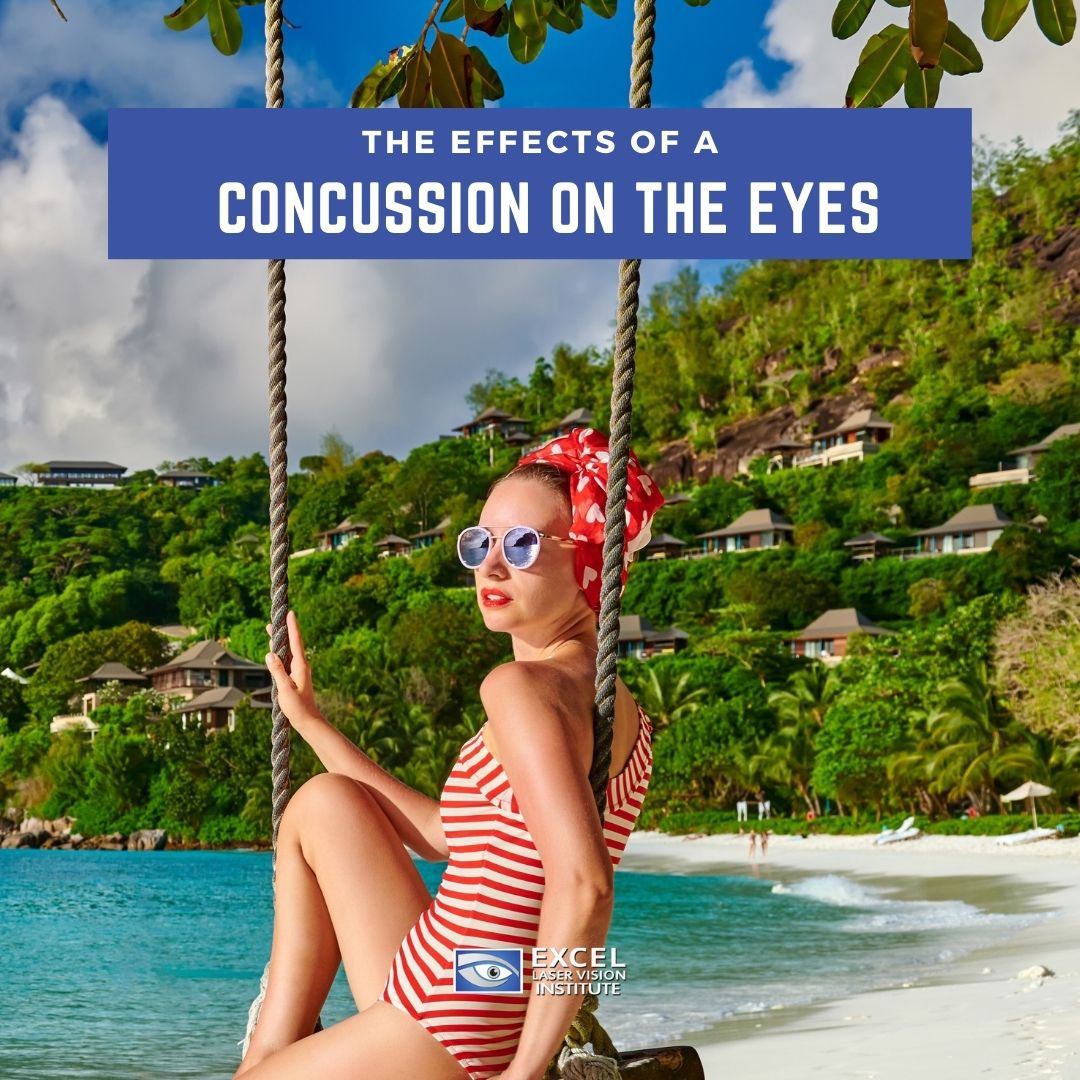
The Effects of a Concussion on the Eyes
Concussions are defined as traumatic brain injuries. The word “concussion” comes from the Latin root “concutere” which means “shake” or “dash together.” When the brain hits the inner walls of a person’s skull, this can cause serious symptoms such as fatigue, nausea, vomiting, headaches, ringing in one’s ears, amnesia, dizziness, and confusion. A brain is a powerful tool that, when damaged, can affect every aspect of the body. According to experts at Excel Laser Vision Institute, a LASIK clinic in Orange County, concussions can also affect your eye health.

While many people lose consciousness after suffering a concussion, this is not always the case. In fact, symptoms can appear much later from the time of the concussion, which can make them difficult to self-diagnose. These are some of the symptoms that might arise directly after an injury or a few days after:
- Loss of balance
- Irritability
- Dazed look
- Change in sleeping or eating habits
- Lack of interest in things
- Excessive crying
- Vomiting
- Seizures
While concussions can be hard to identify, Orange County LASIK experts say that the eyes can be a great tool for diagnosing head trauma. The King-Devick test is a test that eye doctors may use to track eye movements, visual interpretation, and attention. There are also some apps that are being developed to measure a patient’s pupil in reaction to light in order to diagnose concussions. Concussions will not normally show up on MRIs or CT scans which is why it is so important to have other methods for measuring them.
Patients interested in getting LASIK eye surgery should be aware that concussion symptoms can often mirror other vision problems. This is known as Post-Traumatic Vision Syndrome. Some of these symptoms include:
- Difficulty reading (losing one’s place)
- Light sensitivity
- Blurry vision
- Difficulty focusing
- Loss of peripheral vision
- Frequent headaches
- Double vision
- Difficulty moving eyes
Concussions can do more than affect your vision. They also pose a risk to your general eye health. Consult your eye doctor if you have recently suffered a concussion so that they can evaluate your eyes. These are the more serious effects that a concussion can have on your eyes:
- Optic nerve damage: The pressure from a concussion can lead to partial or total loss of vision.
- Retinal detachment: The impact of a concussion can cause the retina to detach from the eye. This requires immediate surgery.
- Vitreous hemorrhage: A concussion may cause blood vessels to leak into the vitreous humor which can cause floaters, blurred vision, a red tint and other symptoms. Medicine may be required to help the healing process.
Before returning to normal activities after suffering a head injury, it is important to get a doctor’s opinion. This is to prevent a second, more damaging head injury that may jeopardize the healing process entirely. The most common treatments for a concussion are rest and pain management. It can take up to a few weeks to fully recover, depending on the severity of the head injury. For more information on concussions and eye health, consult a medical professional.
If you are tired of dealing with blurry vision, contact Excel Laser Vision Institute at (877) 963-4238 for a free LASIK consultation. We are a highly-regarded eye care clinic that offers the best laser eye surgery in Orange County and Los Angeles.
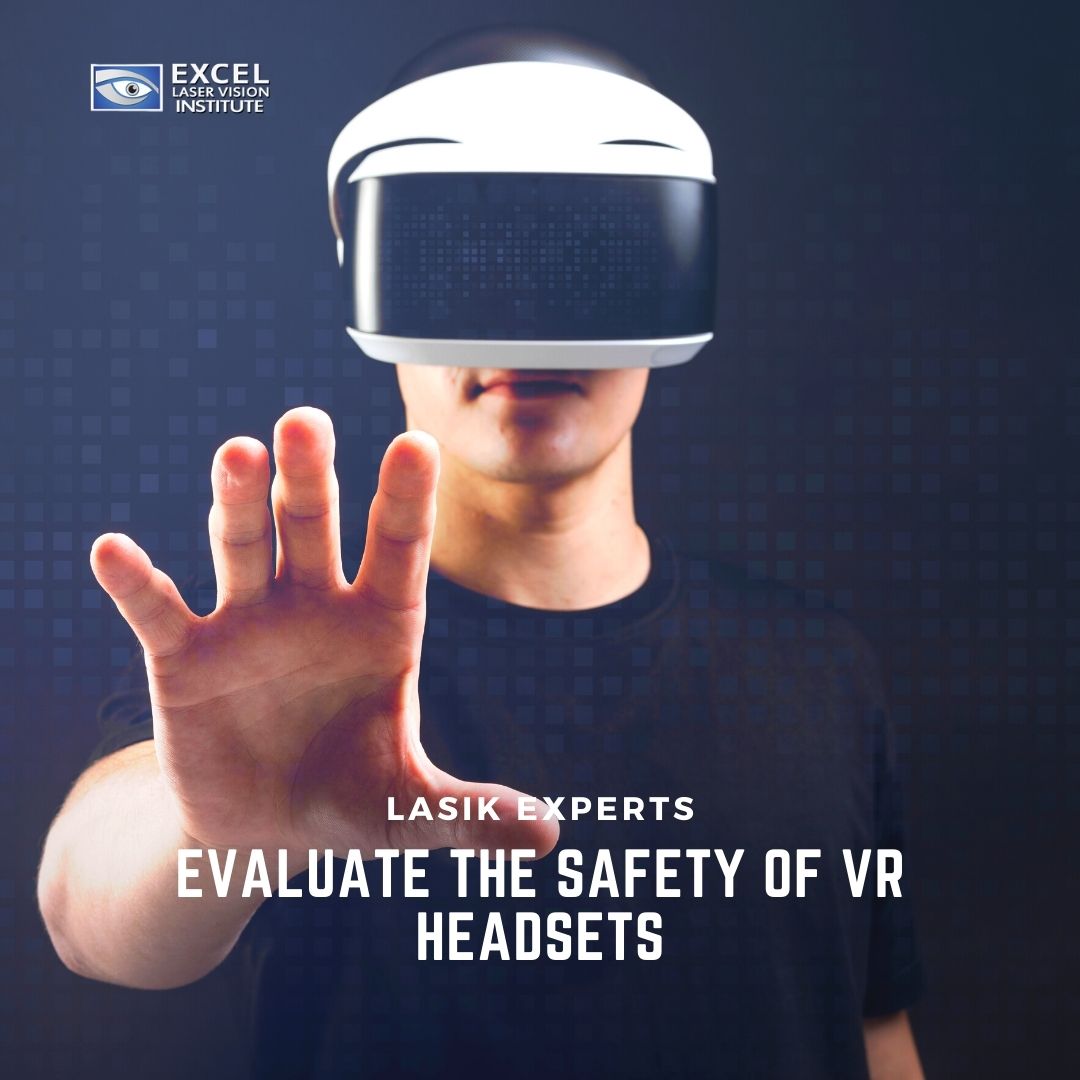
LASIK Experts Evaluate the Safety of VR Headsets
LASIK experts in Orange County such as those at Excel Laser Vision Institute have observed that, with more time inside, people have been increasing their daily screen time. All day, people are working from home on their computer or laptop and then taking breaks by looking at their phone or watching TV. We live in a world of screens. For many people, it’s their main source of productivity and entertainment. It’s no wonder that our screens are getting more and more technologically complex. The invention of virtual reality (VR) headsets is proof of this.
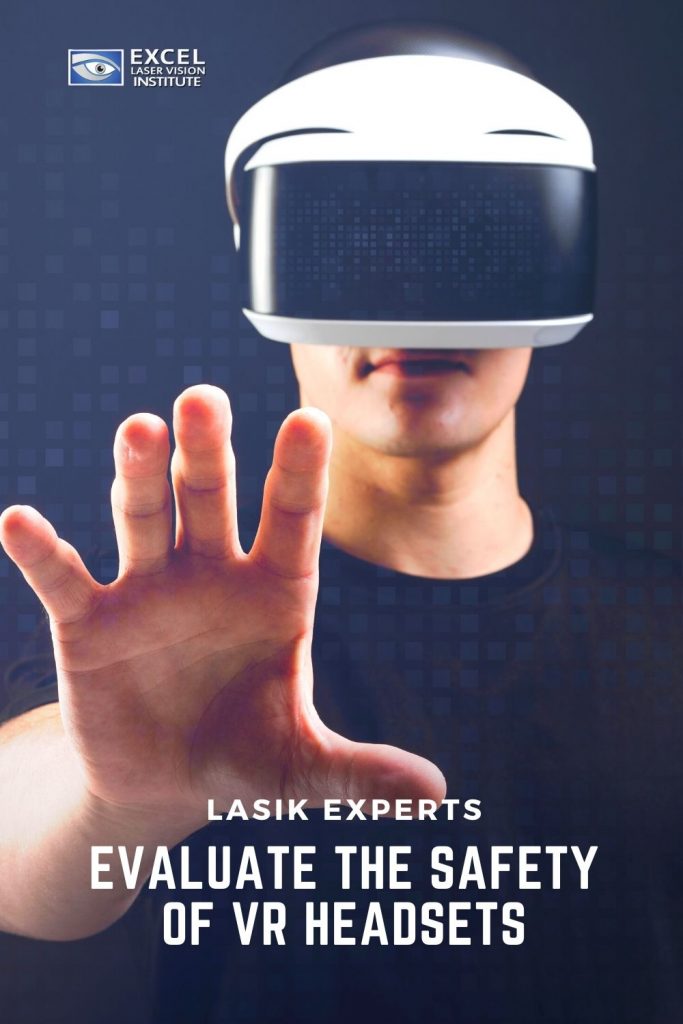
According to Doctor Moosa, a LASIK surgeon in Orange County, too much screen time can be hard on our eyes. It can cause eye strain, fatigue, and dry eye. This is the main reason why eye doctors will recommend taking regular breaks and blinking often when using a digital device. So, how does this translate to VR headsets? Virtual reality has been around for a long time but it has become a commercial success only recently. Since 2020 began, about 71% of Americans started using VR headsets more. As a more immersive digital device, some consumers are wondering if VR is more damaging to our vision than our normal screens. Will everybody be needing LASIK eye surgery after consistently playing with virtual reality? The answer is not cut and dried.
VR headsets can simulate a 360 degree experience that immerses the user in a new world. Instead of looking at a flat screen, the user wears goggles that are constructed with different displays. Each display is given a separate video feed that seamlessly transitions into the next. This presents the illusion of being in a new, 3D environment. Virtual reality can offer a fun, interactive experience for working out, gaming, or simulating adventure. However, it can also affect our bodies. Some users report feeling overwhelmed and nauseous by the VR perspective. This is known as cybersickness.
In terms of affecting vision, Orange County LASIK experts say that VR does not pose a significant danger to our eye health. However, like anything, it requires moderation. VR participants may experience digital eye strain because of decreased blinking. This can lead to dry eye and fatigue, much like with normal screens. The best way to avoid these symptoms is to take frequent breaks and focus our eyes on things in the real world.
Another thing to keep in mind with VR headsets is that they can affect people with strabismus (wandering eye) or amblyopia (lazy eye). With these conditions, the 3D effects of virtual reality may not be as striking. Plus, using VR with these conditions may lead to greater eye fatigue due to the lack of depth perception. Users who wear glasses may also run into some issues when using VR headsets. Not all headsets are built to accommodate glasses and thus may be uncomfortable for the user. Unfortunately, VR has not been constructed to accommodate the user’s vision needs. So, if they are nearsighted, farsighted, or have astigmatism, they are still required to wear their prescription to enjoy the experience.
If you have a refractive error and would like to enjoy VR without contacts or glasses, then schedule a consultation at Excel Laser Vision Institute. We can discuss laser eye surgery, one of the most innovative vision correction alternatives on the market. Achieve your vision goals with us today!
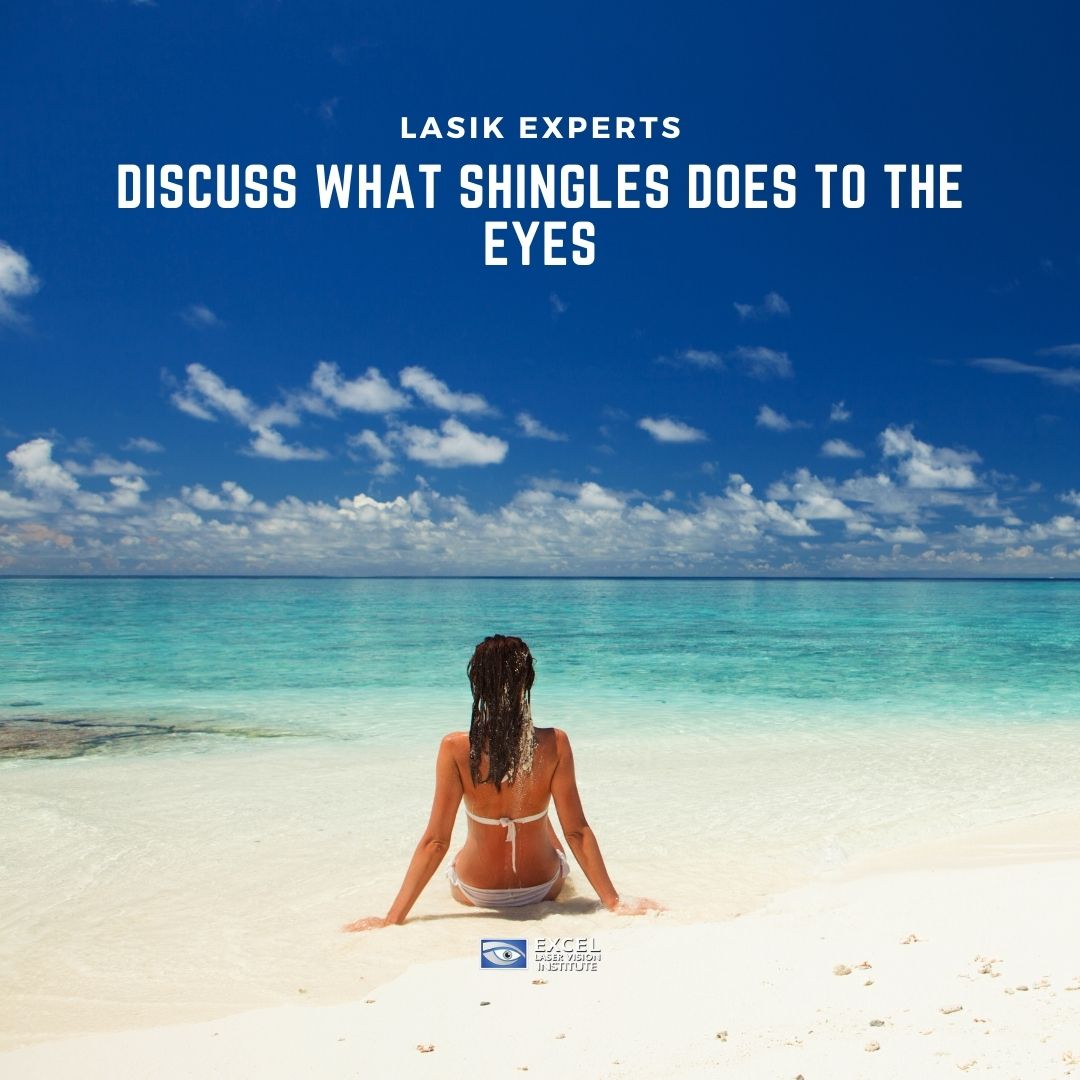
LASIK Experts Discuss What Shingles Does to the Eyes
Some of us may be familiar with the viral infection known as shingles. It’s often referred to as “chickenpox for adults.” However, many people don’t know that shingles (otherwise known as herpes zoster) can affect eye health. According to LASIK experts in Orange County, the viral infection can lead to eye problems such as cataracts, glaucoma, and scarring of the cornea.
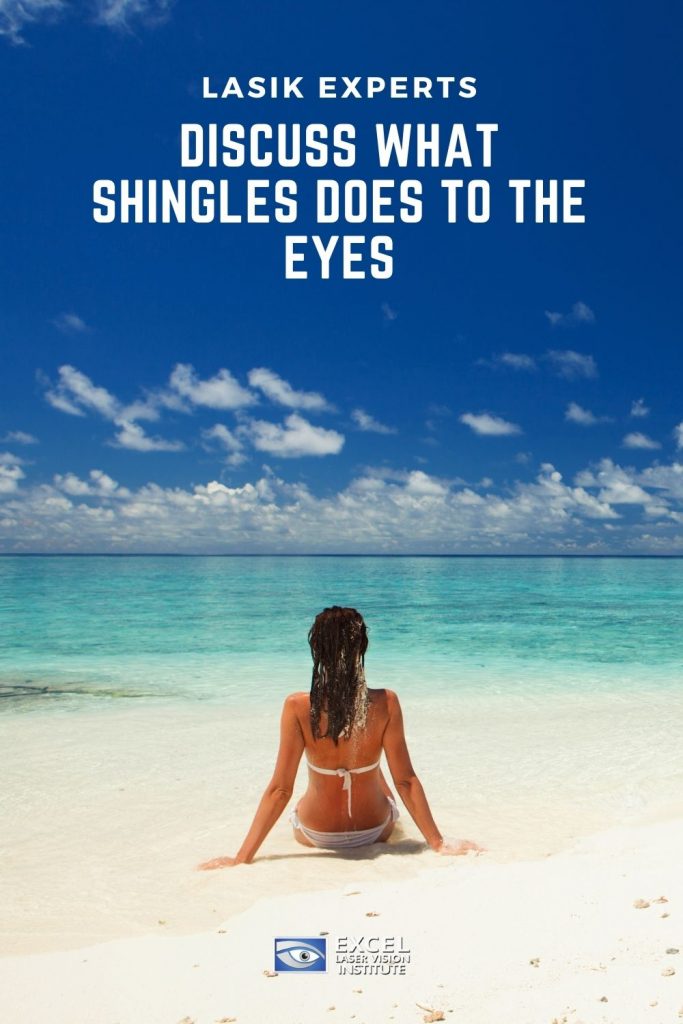
The reason that shingles is likened to chickenpox is because both infections are caused by the varicella-zoster virus. This virus can actually remain dormant in a person’s body. If, for example, someone had and recovered from chickenpox as a child, then that virus may be reactivated as shingles later in life. Experts who perform laser eye surgery in Orange County say that shingles affects about 1 in 3 Americans each year.
For the most part, shingles affects people later in life. Usually, after age 50. Medical experts believe that the natural decline in a person’s immune system is one of the reasons the virus becomes activated. When your immune system weakens over time, it may not be able to recognize certain viruses or know how to attack them. Other conditions that affect your chances of developing shingles include auto-immune diseases, HIV, and cancer. If you are taking steroids, transplant medications, or chemotherapy drugs, you may also be susceptible to the virus.
Shingles manifests in a variety of ways. Here are some of the most common symptoms that you might notice:
- Burning, tingling, or numb skin
- Skin sensitivity
- Painful rashes
- Fever and chills
- Headache
- Fatigue
- Upset stomach
- Fluid-filled blisters
- Mild itching
According to Doctor Moosa, a LASIK surgeon in Orange County, 10-20% of people who get shingles can also develop ophthalmic herpes zoster, which is shingles around the eyes. This can lead to cataracts, corneal scarring, glaucoma, and vision loss. If left untreated, the virus can affect the nerves of the eye, causing symptoms such as:
- Dry eye
- Blurry vision
- Redness/rashes in and around the eye
- Face tingling
- Pink eye
- Throbbing pain
- Light sensitivity
- Optic nerve swelling
Fortunately, there are some treatments available to those with ophthalmic herpes zoster. Antiviral medications may be given within the first 72 hours of a patient showing symptoms. Numbing medicine or cream may help relieve uncomfortable symptoms. Painkillers may also be given to relieve the patient, although they will not stop the infection itself. Hydrating eye drops, cooling compresses, and anti-bacterial eye drops will help target symptoms affecting the eye.
If shingles have affected your eyes, then you may require procedures such as cataract surgery from a LASIK clinic. Be sure to contact your eye doctor in Orange County such as Doctor Moosa immediately after noticing symptoms. The eyes are a sensitive part of the body, which means that they require excellent care and attention. The effects of shingles may last a long time if your eyes are having a hard time healing. Follow the care routine set in place by your doctor and schedule regular checkups to track your progress. Shingles typically last 2-4 weeks and, while it is possible to get it more than once, most people don’t.
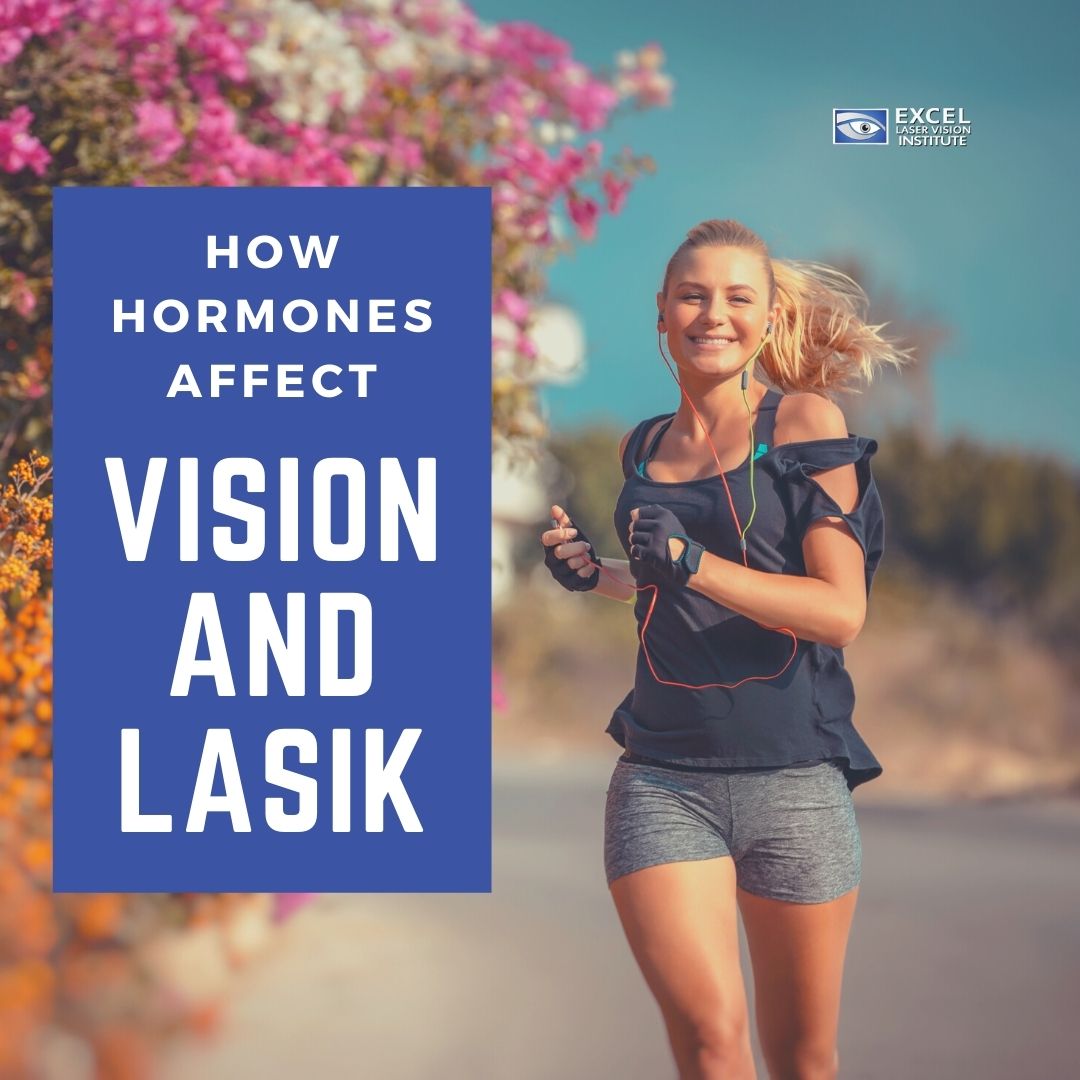
How Hormones Affect Vision and LASIK
Hormones are responsible for many processes in our body, including growth, metabolism, and even vision. As we age and go through bodily changes like pregnancy, our hormones can shift slightly, altering the quality of our eye sight. It’s no wonder that prospective patients for LASIK are examined closely and consulted on any current physical conditions before their surgeon will move forward with the procedure.
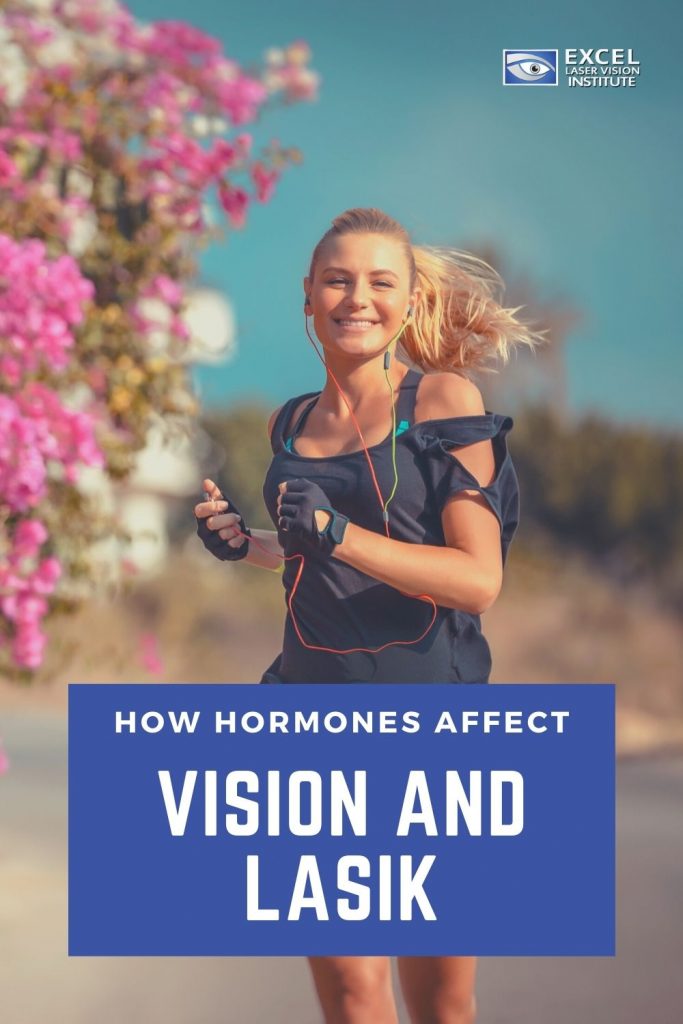
Different kinds of hormones carry out different functions in our body. When levels are unbalanced due to pregnancy or other conditions, this can affect a patient’s natural prescription. Those who are interested in laser vision correction in Los Angeles will be vetted thoroughly to ensure that hormonal imbalance, among other things, is not an issue. Here are some of the critical hormones that can affect our state of vision:
- Testosterone
- Progesterone
- Estrogen
- Insulin
- Gonadotropin-releasing hormone
- Thyroid hormones: tetraiodothyronine and triiodothyronine
Hormonal changes may happen as a result of age, such as menopause, or from a condition such as diabetes. People may experience slight or drastic changes in their hormones that affect their vision through a variety of life events. Here are some of them:
- During puberty, Gonadotropin-releasing hormone travels to the pituitary gland and begins the release of other hormones. Pre-teens may experience growth spurts that temporarily change the shape of their eyeball, which can cause nearsightedness. Patients must be at least 18 years of age to get LASIK in Los Angeles, which helps eliminate the risk of hormonal imbalance from this stage of maturation.
- During pregnancy, fluctuations in progesterone and estrogen can affect the glands of the eyelids and eyes. This may cause symptoms of irritation such as dry eye. Estrogen may also change the shape of the cornea, which can cause a temporary vision impairment. Usually, this is reversed after pregnancy, which is why doctors suggest waiting for hormones to rebalance before getting your corrective eye surgery.
- During menopause, eyes may become drier and less elastic as a result of a decrease in estrogen. This can lead to a more serious case of dry eye or even blurred vision. Women who have reached menopause may also have a higher level of intraocular pressure that could increase their chances of developing glaucoma. Eye care is especially crucial during this time of life to preserve vision and health.
- Middle-aged men may experience a drop in testosterone levels, which can lead to blurred vision and dry eye. This hormonal shift is similar to the stage of menopause for women. Men who are experiencing issues with creating moisture in their tear ducts should seek out an eye care professional for an expert opinion.
- Anyone with excessively low or excessively high thyroid hormones will also experience vision changes. High levels of the T4 hormone can actually increase a patient’s risk of age-related macular degeneration. Thyroid hormones can also affect the cells responsible for color vision.
- Anyone with diabetes may notice excessive dry eye as a result of low insulin levels. This affects both type 1 and type 2 diabetes patients. If you are interested in getting laser eye surgery and have diabetes, then you should definitely consult an expert on your condition. Some patients may not be eligible for LASIK, but may qualify for an alternative refractive surgery.
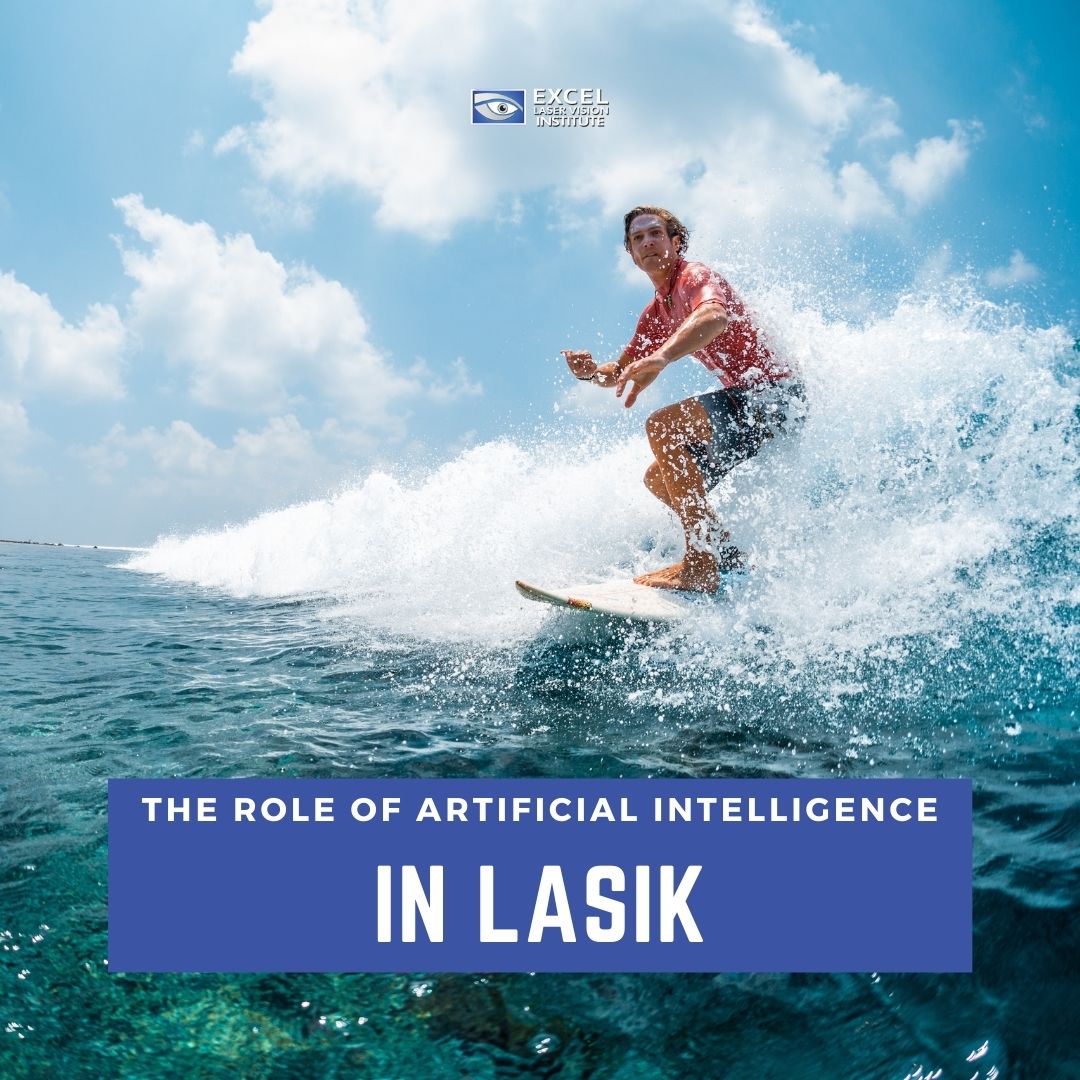
The Role of Artificial Intelligence in LASIK
Our world is no stranger to artificial intelligence. Technology like Siri, face recognition, and geo targeted ads are perfect examples of how artificial intelligence has been slowly integrated into our day-to-day life. AI can do more than entertain. It provides convenience, security, and precision. For that reason, it has proven to be a valuable asset in the healthcare world, specifically for eye care procedures like LASIK.
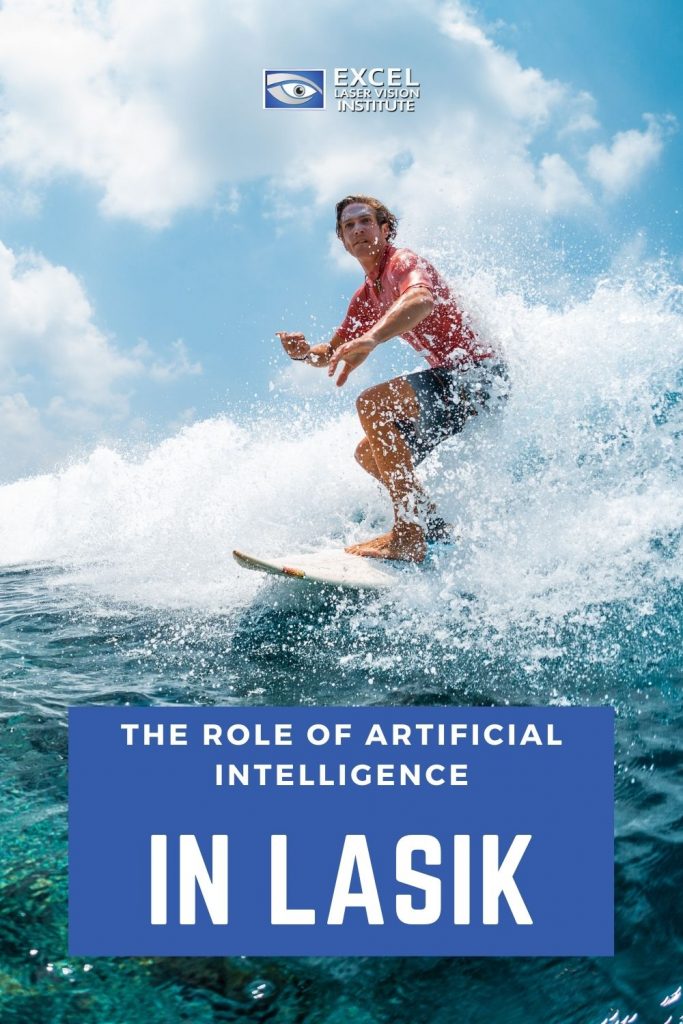
By definition, artificial intelligence is a form of technology that mimics human behavior and thought-processes. AI can “learn” much like humans by sifting through the given data while following its programmed course. In the healthcare system, AI is used to analyze medical imaging. Technology has advanced so that artificial intelligence can now detect certain skin and lung cancers as well as tuberculosis from x-rays.
Ophthalmologists who perform laser eye surgery in Los Angeles say that artificial intelligence has played a part in preventing blindness. AI can be applied to optical coherence tomography and visual fields as well as fundus photographs to identify diabetic retinopathy, glaucoma, age-related macular degeneration, and other health issues in the eye. Here are some more examples of artificial intelligence being used in eye care:
- One British AI company is working with a hospital in London to identify the development of exudative age-related macular degeneration.
- Researchers at a specialty hospital in New York have created an algorithm for AI to identify age-related macular degeneration in patients. This solution is both convenient and inexpensive, given that the required technology is basic.
- One Dutch-American retinal specialist created the first autonomous diagnosis system for diabetic retinopathy, which was approved for use in the U.S. in 2018.
As you can see, artificial intelligence is slowly transforming the world we live in through bettering healthcare practices. In the world of eye care, AI is particularly useful for its effectiveness in analyzing images. Eye exams at a LASIK eye center such as Excel Laser Vision Institute in Los Angeles require high-quality images and maps of the patient’s eyes. With the right algorithm, artificial intelligence can be taught to detect diseases during these routine exams and help prevent the onset of blindness. AI may also eventually allow for remote imaging in the future.
There are some limitations to AI which can be supplemented by other technology and manual skills. When you receive LASIK in Los Angeles, you are not given over entirely to an automatic machine. On the contrary, there is an experienced surgeon monitoring and controlling the instruments that correct your refractive error. In this way, machines and humans can work together to help patients achieve their vision goals. When utilizing AI in procedures like LASIK, eye surgeons can improve the speed, precision, and effectiveness of the surgery.
While artificial intelligence is an impressive feat for mankind, it is no replacement for the human brain. The existence of increasingly technical AI is exciting, but it does not signal the end of medical professionals. Rest assured, you will still have your eye doctor. Instead of replacing the skills of ophthalmologists, AI operates as a high-functioning aid for exams, diagnoses, and treatments. Statistics show that diabetic retinopathy scans controlled by AI are 95.7% accurate at detecting damage that requires a specialist referral and 100% accurate at detecting moderate to severe forms of the disease that might lead to vision loss. As we move into the future, AI moves with us and allows us to achieve greater things than we could have ever imagined.

Learn About Contoura LASIK Recovery and its Origins as a Refractive Surgery
As one of the most popular and successful elective surgeries, LASIK is taking the nation by storm. Many people don’t realize that there are different forms of LASIK, from the very traditional blade LASIK to bladeless to topography-guided. We are here to discuss the origins of topography-guided LASIK as well as Contoura LASIK recovery in order to help you understand the level of innovation that this refractive surgery has achieved over the years.

LASIK is a well-established refractive surgery that has been used to correct astigmatism, nearsightedness, and farsightedness for decades. In the last 30 years, laser eye technology has significantly improved to more precisely treat refractive errors according to each patient’s needs. Topography-guided LASIK, or Contoura LASIK, can measure not only the curvature of a patient’s cornea but pinpoint minuscule imperfections in this corneal topography in order to better achieve their vision goals.
The Origins of Contoura
In order to understand the origins of Contoura, we must first review the history of laser eye surgery in general. Around 1990 is the time that photorefractive keratectomy or PRK was created by European eye doctors. These refractive surgery experts sought to improve vision correction procedures by integrating new strategies and techniques. Once the creation of the corneal flap became known, traditional LASIK eye surgery started to develop. PRK was approved by the FDA in 1995 and is still used today as an alternative to LASIK. Patients with thinner corneas may be better suited to PRK because it conserves eye tissue. However, PRK can also require a longer time to heal from, unlike Contoura LASIK recovery.
Traditional LASIK was finally approved in 1999 and offered a shorter recovery period as well as a greater range of accuracy. Since then, technology like Wavefront-guided lasers have entered the scene to create more precise LASIK procedures. Wavefront-guided LASIK was available by 2003 and provided a more custom approach to vision correction. Patients raved about LASIK because it targeted their individual vision problems and achieved long-term results.
If you’re already excited about laser correction and are looking up “Contoura LASIK near me,” then you should know that the FDA approved Contoura in 2015. This topography-guided version of LASIK utilizes advanced technology that can essentially map out the patient’s cornea and create a custom procedure to correct their refractive errors. According to experts, this technology pinpoints over 22,000 elevation spots on the cornea which can then be analyzed and recorded on the surgeon’s computer. This information helps direct the laser beam during the procedure, which in turn leads to more precise correction. Traditional LASIK corrects the general shape of the cornea whereas Contoura LASIK adjusts specific defects on the surface of the cornea which affect the texture. The technology allows patients to achieve clearer vision than they’ve ever experienced with contact lenses or glasses.
Contoura LASIK Candidates
If you are interested in getting Contoura LASIK, then you may be wondering if you qualify for the procedure. Much like any other refractive surgery, Contoura requires patients to be seen by a professional eye surgeon for an evaluation and consultation. Not all patients are eligible for the procedure because of their corneal thickness, symptoms of dry eye, and general health. However, this refractive surgery is very advanced and therefore can account for many different eye conditions. The best way to find out if you can receive Contoura LASIK is to visit a LASIK clinic and speak to an expert. Here are some of the factors that they will keep in mind during your exam and consultation:
- Your level of prescription
- Your corneal thickness
- Your pupil size
- Your family health history
- Your personal health level
- Your eye sensitivity
Topography-Guided LASIK Surgery
In the case that you do qualify for Contoura, you are probably wondering what to expect from this procedure. The good news is that, like many refractive surgeries, it is brief but effective. Contoura LASIK can last fifteen to twenty minutes and is generally said to be free of any discomfort. Most patients see a noticeable difference in their visual acuity directly after the procedure and it continues to improve as the eyes heal. Recovery times vary from person to person but many patients are able to return to their daily routines in the next few days. Full visual acuity will return within the next few months of recovery. Here are some more tips for your surgery day:
- Avoid wearing contact lenses for a few weeks before your appointment (your surgeon will direct you if needed).
- Have a designated driver to get you home after the surgery and pick up any medications or eye drops that you may need.
- Come to your surgery appointment in comfortable clothes with no makeup.
- Maintain proper eye care as directed by your surgeon and avoid rubbing your eyes.
- Directly after your surgery, you will want to rest with protective eye shields and lubricating drops at the ready.
- Notice any lingering symptoms after the surgery such as red-eye, watery eyes, or dry eye and report them to your surgeon during post-operative check-ups.
- Avoid any activities that may risk injury to the eye and ask your surgeon before returning to more athletic activities.
Achieve Your Vision Goals
Patients who receive Contoura Vision LASIK are often amazed at how well they can see after the procedure. Some say that their vision is even better than wearing prescription glasses or contacts. Contoura LASIK is also known for reducing the severity of light sensitivity, glare, and troubled night vision. Around ninety-two percent of patients who have had Contoura LASIK report a visual acuity of 20/20 or better after 12 months. With these statistics, Contoura LASIK is certainly a worthwhile investment.
If you are dealing with nearsightedness, farsightedness, or astigmatism, then visit a LASIK clinic to ask about Contoura Vision. You might be surprised to learn that the procedure is more affordable than ever. With financial packages and aid, many patients are able to achieve their vision goals without breaking the bank. In fact, if you add up the accumulating costs of wearing glasses or contacts, LASIK eye surgery is actually cheaper in the long run!
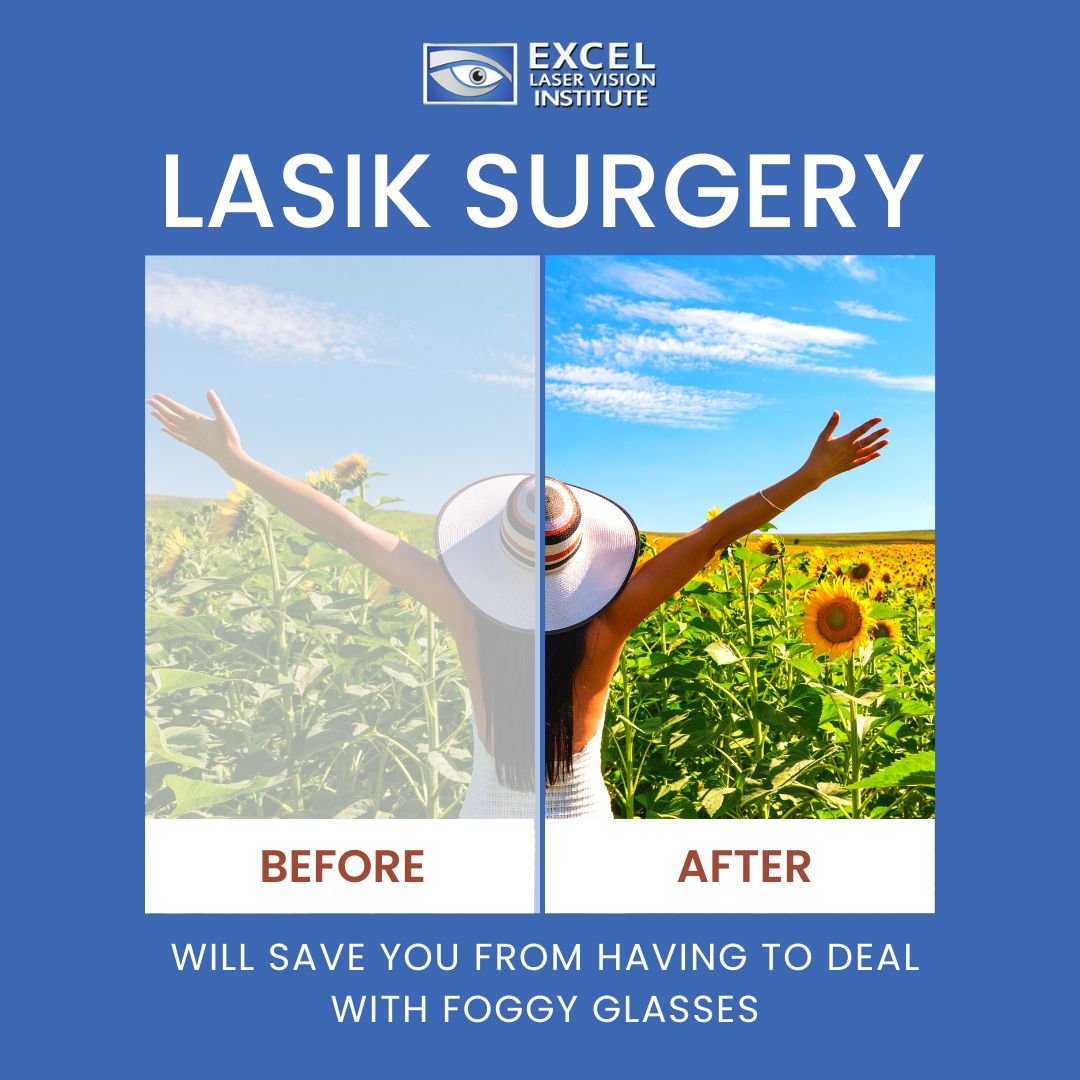
LASIK Surgery Will Save You from Having to Deal with Foggy Glasses
One of the reasons that so many people get excited about LASIK surgery in Los Angeles is that it can often free an individual from wearing contacts or glasses. This independence from corrective lenses is not only convenient; it’s life-changing. With recent health orders asking people to wear facemasks in public, more and more individuals that rely on glasses are struggling with the common problem of foggy glasses.
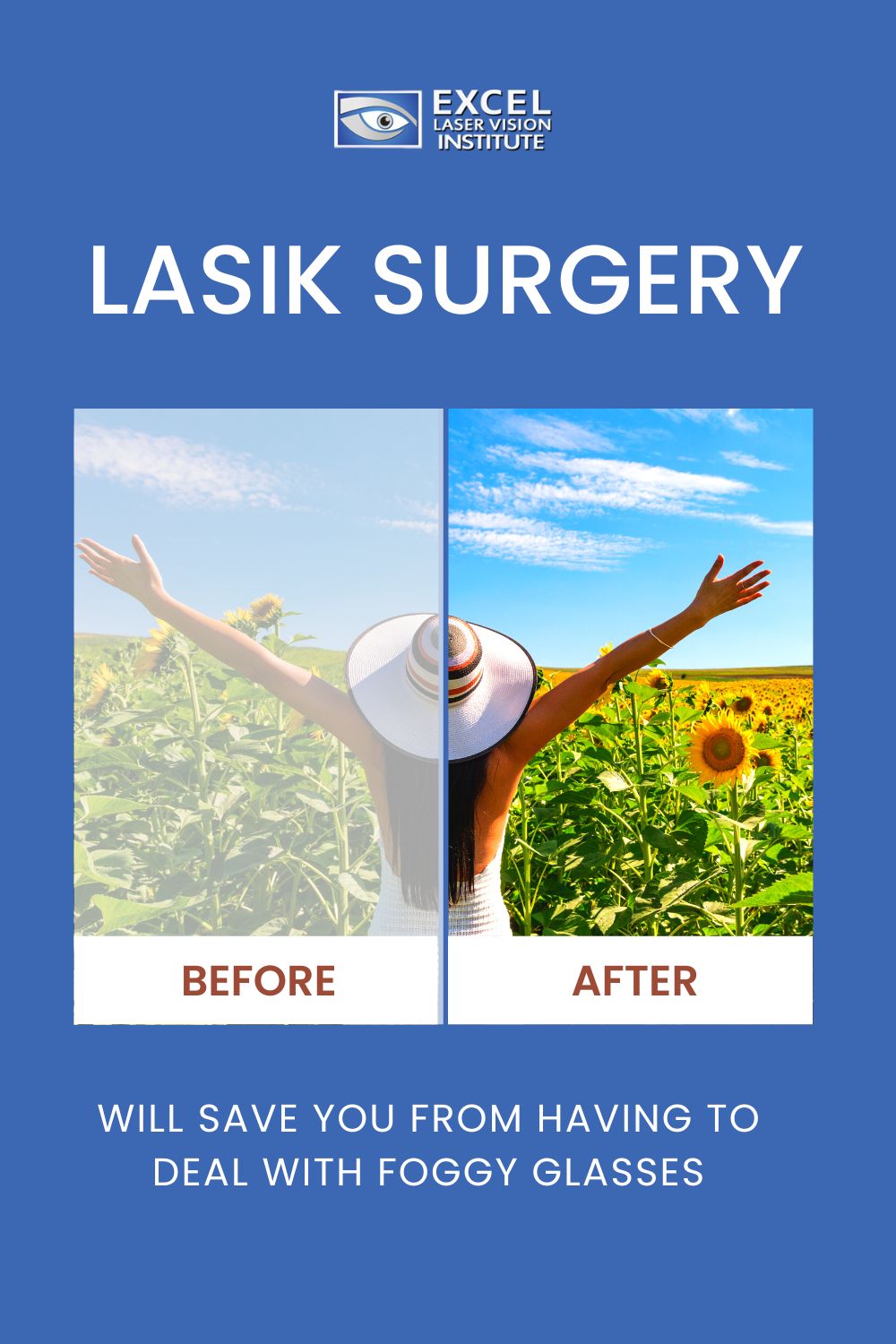
Foggy glasses are hard to avoid when a face covering is necessary for most public spaces, especially now that we are entering the winter season. Even with masks that have tight, bendable nose bridges, air escapes and obstructs the vision of anyone wearing glasses. This is both inconvenient and dangerous. People walking in public, driving, and working can not effectively see because they are constantly dealing with foggy glasses. Plus, their risk of contracting a virus increases with the amount of adjusting they must do to compensate for this fogging-up problem. Many people are starting to search for the best laser eye surgery in Los Angeles as a long-term solution.
When the world was first struck with a new virus, many people were warned against wearing contact lenses. Glasses were a safer alternative because they did not require direct contact with the eye. This recommendation still stands. However, glasses present their own problems. Besides fogging up, glasses are easily breakable and can be lost, making it difficult for people to always rely on them. There are some temporary solutions to glasses fogging up, like using soap and water to wash the lenses or an anti-fog spray. However, these are not fool-proof solutions and can only provide so much of a barrier from moisture.
According to LASIK experts such as Doctor Moosa, the key to foggy glasses is that our breath is both warm and moist. This presents the same problem as a car windshield in the wintertime. When exhaling with a mask on, the water vapor is trapped and concentrated. All it takes is a little gap in our facemasks to cause this air to shoot upward onto our prescription lenses. The surface tension of the droplets causes them to spread like a thin film. The fog will only last until the water evaporates. However, by then, you have probably exhaled again and the fogging process begins all over again.
Fortunately, foggy glasses do not have to become the norm during this time. Many people are looking into LASIK as a permanent method of vision correction so that they may be less dependent on other means. LASIK eye surgery cost is more affordable than ever, especially with various financial plans available. If you are interested in laser eye surgery, then you can schedule an appointment with a LASIK clinic for an eye exam and consultation. Make sure to ask all of your burning questions about the procedure, such as how long does it take and how much is laser eye surgery. You will be well taken care of by experts and guided through the process to reach your vision goals.

